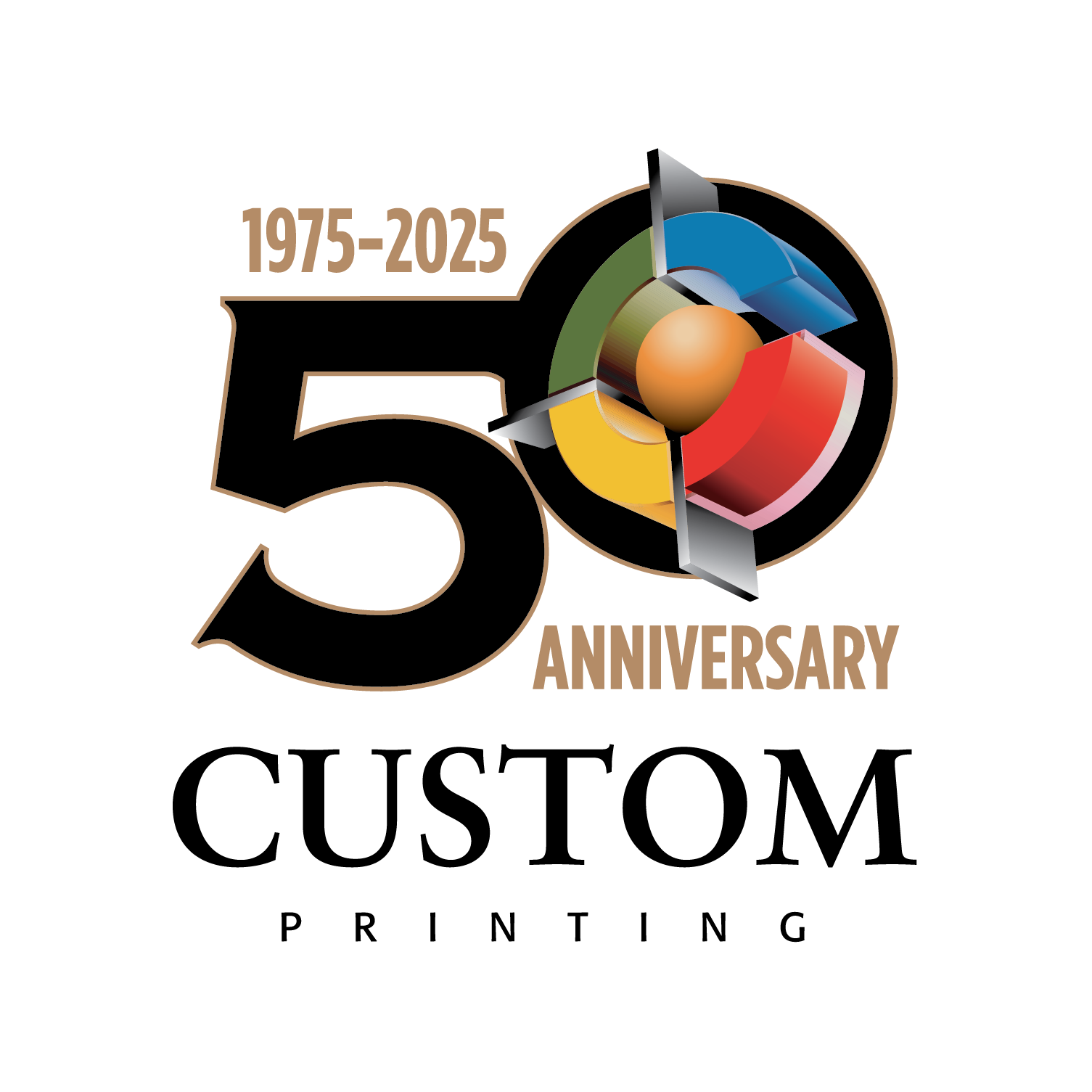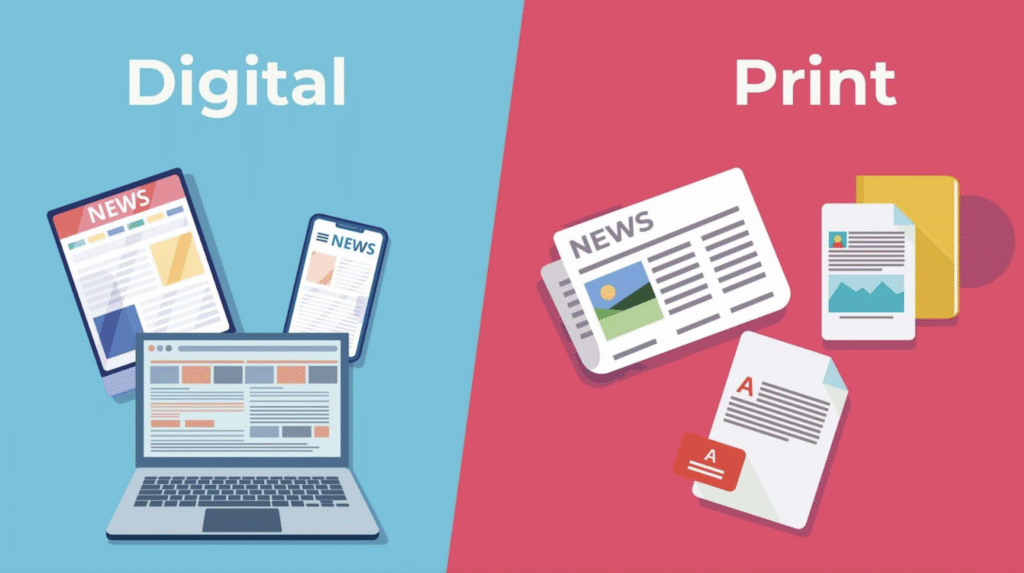In today’s digital-first marketing environment, it’s easy to overlook the role print still plays in brand strategy. But for businesses along California’s Central Coast and beyond, physical materials remain a powerful way to reinforce identity, build trust, and create lasting impressions.
From direct mail campaigns to printed signage and marketing collateral, consistency across print channels can be the difference between looking polished and looking forgettable.
Promoting your brand’s message is not (and should not be) an either/or decision between print and digital media. It is entirely an “AND” combination. One complements the other to create more impact and higher ROI.
Here’s why maintaining strong, consistent print branding still matters, and how it works with digital media.
Print Gives Your Brand a Physical Presence
Digital branding is fast and flexible. But print branding is physical. It gives your audience something to touch, hold, pin on the wall, or share at the office. That physical presence brings your brand into the real world—something a banner ad or email can’t replicate.
From sales sheets and brochures to product news and trade show graphics, print helps your brand feel substantial, trusted, and well established.
Direct Mail vs. Email: Which Builds More Trust?
Email marketing is cost-effective and easy to automate, but it’s also saturated. How many emails do you receive per day? More than a hundred? How many are in your inbox right now? Thousands? Most people delete promotional emails without opening them. Direct mail, on the other hand, still commands attention in a way digital outreach rarely does. Because most of your competitors aren’t using printed direct mail to reach your prospects, it’s a huge advantage when you are.
Most of us receive fewer than a dozen pieces of mail per day, so we notice every piece. Unlike email, we touch and handle each envelope and postcard in our stack. Maybe we still throw some of it away before we open the envelope, but there is a higher likelihood that we will look at it while we are holding it, and then decide whether to open and read it. That extra moment in time triggers our minds to wonder about what’s inside. That trigger creates a higher open rate than there is with an email in our junkmail folder.
In fact, a USPS study found that direct mail is remembered 70% better than digital ads, and brand recall is significantly stronger when messaging is delivered in print.
All this doesn’t mean you should abandon email. The most effective B2B marketers use both:
- Use direct mail to make a strong first impression or re-engage a lapsed client.
- Follow up with email for nurturing, reminders, and lead conversion.
This combination builds trust and keeps your brand top of mind at multiple touchpoints.
Printed Collateral vs. Digital Collateral
Digital collateral is useful when quick access and sharing are key—think PDF sell sheets or product catalogs linked in an email. But when you’re meeting face-to-face with customers or sending a proposal, printed collateral makes a bigger impression.
Here’s how the two compare:
| Printed Collateral | Digital Collateral |
| Feels more permanent and professional | Easy to update and distribute |
| Easier to engage with in person | Great for remote teams and virtual sales |
| Can reinforce premium brand positioning through paper stock and finishes | Can incorporate dynamic elements like video or links |
If you’re sending a new client a sample kit, proposal packet, or welcome folder, investing in print sends the signal that you take your business, and theirs, more seriously.
Need help designing materials like this? Our collateral printing services cover everything from booklets to presentation folders.
Printed Signage vs. Digital Signage: Which Is Right for Your Space?
Digital signage works well for quick updates in fast-paced environments like airports or retail. But for many B2B businesses, printed signage is still more practical and cost-effective. Think manufacturers, educational institutions, healthcare providers, and trade show exhibitors.
Printed signage:
- Doesn’t rely on power or internet access
- Is often more affordable long-term
- Can be used indoors or outdoors with weather-resistant substrates
- Allows for precise color matching and brand consistency
More importantly, printed signage can be scaled to fit your space—from window clings and wall graphics to floor decals and building banners. If you’re showcasing your brand at a local event or need long-term building signage, print wins in durability and cost.
Explore our large format printing services for more signage solutions.
The Power of Consistency in Print
Every printed piece your business shares, whether it’s a catalog, a postcard, or a conference banner, tells a story about your brand. Inconsistencies in color, typography, logos, or paper quality can send mixed messages or make your business look unprofessional. To protect your brand, we recommend:
- Standardizing your print assets using a brand style guide
- Choosing consistent substrates and finishes for core materials
- Working with a single trusted printer who understands your brand
At Custom Printing, we help Central Coast businesses keep their materials aligned and consistent across all formats. From prepress setup to finishing and delivery, our team ensures your materials reflect the quality of your brand—every time.
Digital will continue to evolve. But print hasn’t lost its place, it’s simply taken on a more strategic role in a multi-channel environment. Businesses that integrate printed branding into their larger marketing efforts will create stronger impressions and build longer-lasting relationships.
Need help creating printed materials that match your brand? Let’s talk. Contact Custom Printing to get started.


